In 2021, we were inundated with AI blog-generating software using GPT-3 (machine learning AI).
They all pretty much hit the market in the same way, from the same angle – offering bloggers and freelancers a way to crank out blog posts on any topic, in a matter of minutes.
This was not what GPT-3 was designed for, however, so you will find that a lot of the raw content doesn’t meet the mark… it just doesn’t have that… je ne sais quoi.
So, as you can imagine, with this, came an influx of junk content – articles and blog posts that were obviously AI-generated, offering little to no value to the reader. In Google’s eyes, such content is no different than spun articles.
You see, if no human guides or edits the software, it will repeat itself, lie and sometimes write unintelligible fluff.
It isn’t all bad, though… I am not here to trash the idea of using AI writers – far from it. I am a proud user of Jasper AI, and I often find myself defending my dear friend, as he has helped me out… a lot!
I am also an affiliate for Jasper, so use my link for a free 10,000-word trial 😉

The thing is, people do not use utilize him properly and just expect him to do all the work. These lazy people think they can just give him a keyword, and then, BAM! They’ve saved $40.
Nah.
If it were that simple, access to the software would cost thousands a month. Anyway, I could sit here and complain about the misuse of this writing tool (which is exactly what it is, in the same way, that Grammarly is), but I would rather share some valuable insight and tips on how I use it, personally.
And, here is a secret, multiple AI-assisted articles are currently ranking in the top 10 positions across multiple sites.
Google clearly takes no issue with them…
Why is that? You may ask.
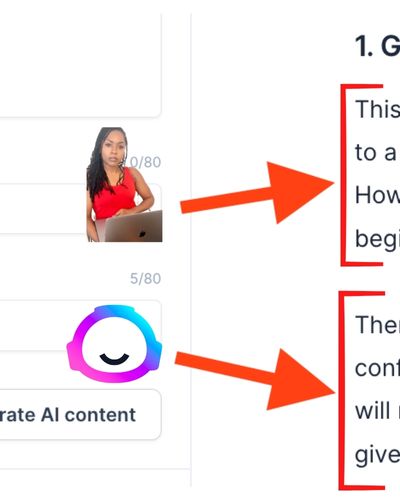
Well, how on earth would Google know who wrote the article and what software has been used to organize the information? It just wouldn’t – not if used properly.
So, here we go. My tips on how to make sure your AI-Generated blog posts are not obviously AI-Generated, so you do not have to live in fear of an algorithm update.
Tip 1: Create A Blog Outline From The SERPs
I use tools like Thruuu (free) and Outranking.io (paid), which both work in a similar way to Frase or Surfer SEO, to help me find relevant subheadings to target related to my main keyword. In this way, I can cover all of the prominent topics across the top 10 articles for the keyword.

Once I have found a few good candidates for headings, I organize them, rephrase them if need be, and then I plug them into Jasper and see what he has to say about them.
I typically use Outranking.io for this part; as it has the ability to summarize these subheadings with SERP data (very important); however, AI credits are limited on Outranking, so once I have the key stuff, Jasper takes over…#bossmode 😎
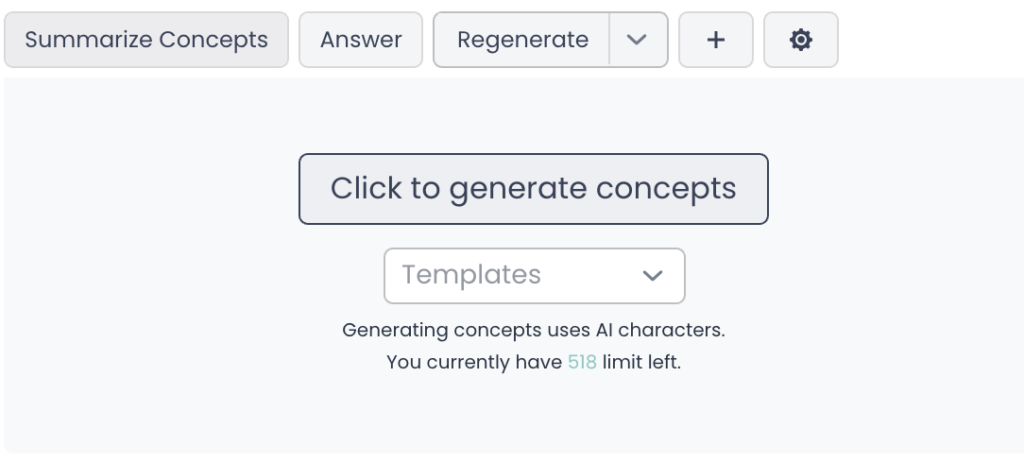
Jasper then has the outline and the facts, so doesn’t need to start making anything up.
I have recently found two very similar tools that combine SERP data analysis with AI writing and I will do a review on those soon
- Scalenut
- Bramework (check out my Bramework Review Video)
🌟 Edit/Update: Giving Your AI Tool The FACTS
– November 2022
You cannot rely on scraped SERP data for your facts. People get things wrong all the time and confidently regurgitate incorrect information just as they do on social media.
I like to do my own research from more reputable sources (you can learn more about the 12 places I get my research from in this video)
You can gather all the facts and unique details of a topic and put that into Jasper’s new tool; Content Summarizer. This tool is an absolute game-changer, and I have been using it with Youtube Transcriptions to quickly grab the key points to help me write an informed and unique blog post!
Check out exactly how I do that, below!
Tip 2: Use People Also Ask To Add FAQs To Your Post
You probably already know this, but if you don’t, Google searches often come with a section of additional search queries that other people have asked. These are usually related to your original search query.
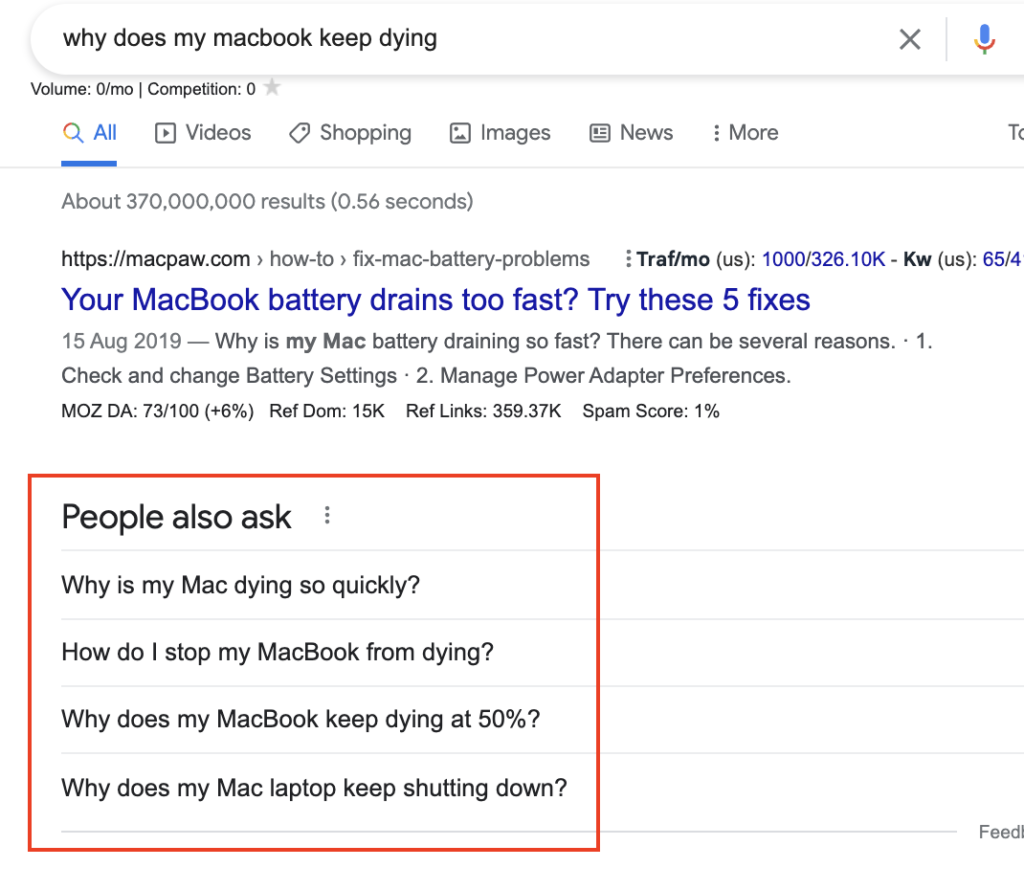
🌟 Edit/Update: Harvesting Multiple Levels Of PAA (FREE!)
– November 2022
You can harvest some PAAs and use your AI tool to help answer them. Some may be suitable for H2s, while others will make good FAQ H3s. You can do this manually or with a tool.
Seo Minion:
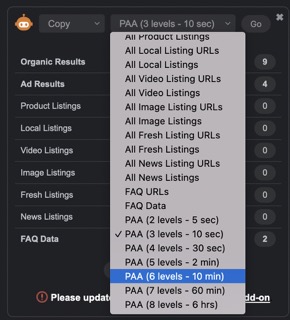
I first heard about this free Chrome and Firefox extension that lets you harvest multiple levels of PAA questions from Steve Toth, who runs SEO Notebook (Steve gives away so many gems 👌)
Do a search for the keyword or query you are targeting in your post, and let SEO Minion grab all of the PAAs for you.
You can either copy them to your clipboard or download a CSV (no Google Sheets option yet 😖).
Rank Math’s FAQ Schema Block
You can use the free Rank Math plugin to add an FAQ schema block and plug your PAA Qs and As into it.
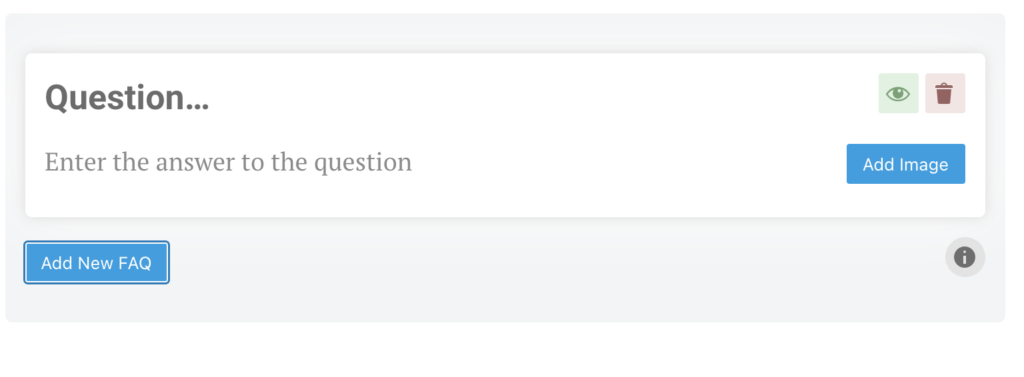
Here Is Another Method of Adding More Depth to Your Articles…
I guarantee the lazy Ai-article churners are not taking the time to do this!
Jasper AI: Quora Answers:
Try to come up with two or three related queries. I like to use the “Quora Answers” tool in Jasper to answer these questions. The tool often does a better job than it would if you were just clicking “Compose” under the question.
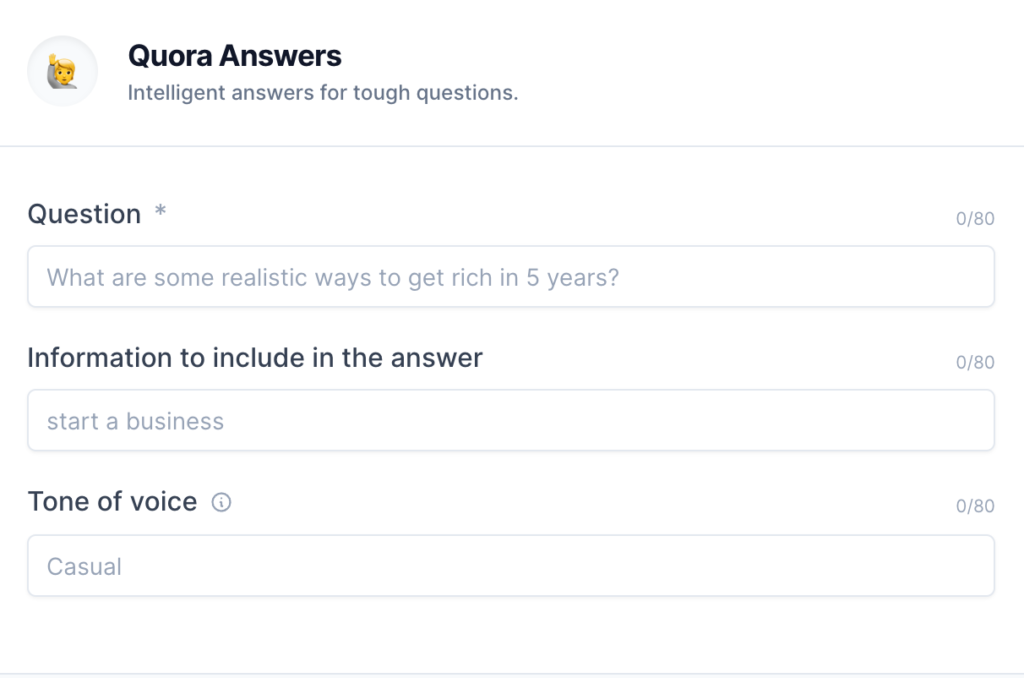
It writes a healthy paragraph that adds more depth to your article. Of course, you will want to fact-check these answers, too.
This is better for Adding H2s as if you are trying to win the PAA snippet, you don’t really want chunky paragraphs for those.
Tip 3: Edit
This really should go without saying. But, if you are using AI tools, your job is that of an editor…edit your content.
This is your opportunity to inject your personality into it. Take the time to read through each section for mistakes and inconsistencies… Make sure they make sense and are factual, too!
💎 I like to write a few sentences in my voice and let Jasper pick up the tone and cadence. He will do his best to replicate that, and as long as you are doing this throughout, the entire article will have your voice.
Again:

Tip 4: Structure The Post
I have already written about how to write a blog post that Google will love. Those same principles apply here. On-page SEO, relevant images, H2s, bullet points etc.
AI-written articles with no editing tend to be a chunk of text with no real structure. So, take the time to make sure it is easy on the eye and easy to read.
The FAQs tip mentioned above really helps with this!
Tip 5: Write Your Own Introductions
This tip should have probably been listed as number one. Writing introductions is sometimes the hardest part of writing a blog post, even for people who do it all day long!
It is also usually hit-and-miss when using AI writers.
I often find that I have to write my own intro or rewrite most of what is generated when using AI-writing tools because they still do not get how we speak. You want that conversational tone that compels readers to keep reading.
It is hard to explain, but if you have read enough AI-written blog, you will start to notice a common tone – you don’t want that.
My advice is to generate a few, snip bits that you like from them and then add your own voice to that.
Tip 6: Give Jasper The Facts!
I know I have already touched on this briefly, but this is by far the biggest complaint about AI.
It just lies so confidently!
While this can be quite hilarious if you know the truth, it is very inconvenient if you are not clued up on the subject (or hiring writers who use AI).
All AI tools do not have a comparative function, but with Bossmode on Jasper, you have three opportunities to input the facts for your blog topic for it to learn about. It will then use these data points in the outputs it gives you.
This is especially useful if you do not want to pay for an additional tool like Outranking mentioned above.
Opportunity 1 – Content Brief
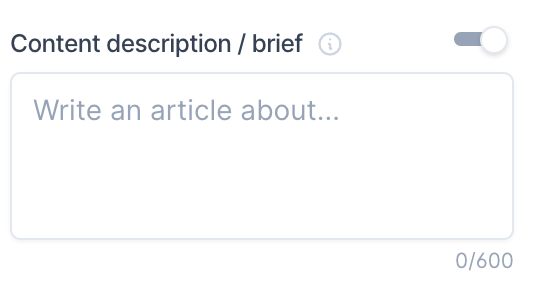
Before you generate a title and introduction, you can put up to 600 characters of key facts in your content brief. Throughout your writing, Jarvis will grab from this data and use it in conjunction with what it already knows about the topic.
He will, more often than not, use your data points to inform himself on the topic throughout the post, so you do not have to worry too much about conflicting details.
Opportunity 2 – Above Text (Bossmode Only)
Simply put your research as “Key Facts” under an H2 before you begin writing your blog.
You can use this method along with the method above. However, without Bossmode, this method is limited as Jarvis can only look back to a certain point.
With Bossmode, Jasper will look back an unlimited amount of words, even when you are 1000 words into an article.
This also means you do not need to use points that are too succinct and can go into more detail.
I recommend if scraping details or facts from other sources, running them through the “Content Improver” tool before giving them to him – just so that he doesn’t copy anything verbatim and end up giving you any plagiarism!
Opportunity 3 – Content Summarizer (🌟NEW!🌟)
As I have already mentioned above, content summarize is by far the best way to “educate” Jasper. Providing you have some solid text, it allows you to input up to 12,000 characters and breaks that down into bullet points.
I am often stunned at how well it analyses the raw content and interprets the data!
Final Takes…
That is it guys! I hope you found this post useful and have come away with some creative ways to use these AI tools.
Even if you do not use Jasper, I am sure these tips will work well across any AI platform with the exception of a few tools.
Used correctly, they can help you scale much faster on a lower budget – just don’t be lazy; otherwise, you are pretty much just using an expensive article spinner 🙂


Leave a Reply